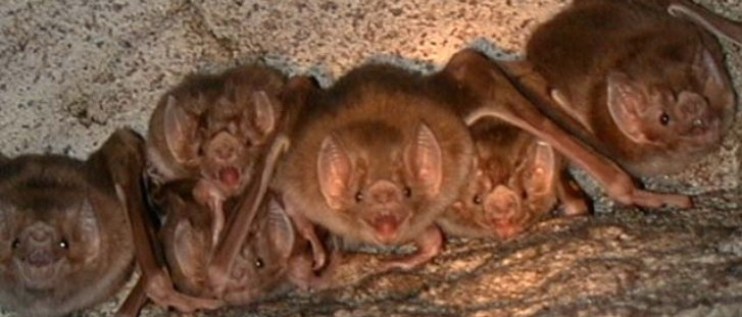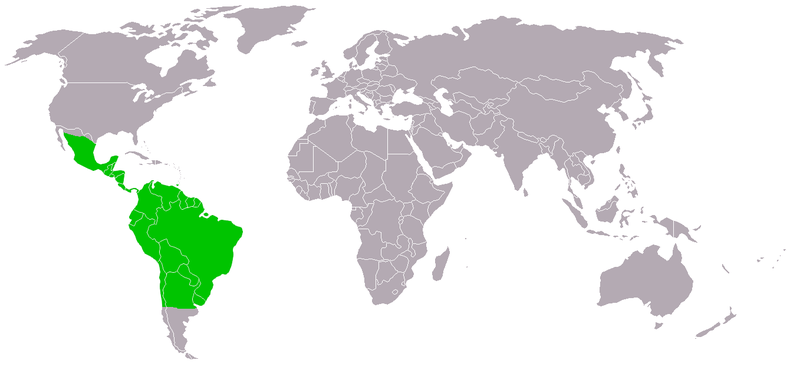
Habitat
You may or may not have seen a bat swoop down near your home. If you
live in the United States, do not worry, it was not a common vampire
bat. The vampire bat is a mammal that can be found
in a diversity of habitats along with a expansive geographical
dispersal. Desmodus rotundus enjoy tropical and subtropical environments and
can be found from northern Mexico and further south into countries
including Uruguay, Argentina, Trinidad, and other regions of the
tropics and subtropics of South America (Lee et al. 2012). Vampire
bats have not been found on the continental U.S. in recent history
but possible fossil records indicate they did once exist in Florida
and states that border Mexico (Trajano 1996).
 The
current conditions in the United States are not considered to be a
suitable habitat for Desmodus rotundus but southern Florida may in the future, once
again, become
suitable (Lee et al. 2012).
The
current conditions in the United States are not considered to be a
suitable habitat for Desmodus rotundus but southern Florida may in the future, once
again, become
suitable (Lee et al. 2012).
Research shows that the distribution of the vampire bat is directly associated to the temperature and precipitation of the region. The vampire bat survives best in climates that do not reach lower than 15°C and do not have humidity levels higher than 45 percent. These two factors are factors that are used when trying to predict possible future distributions of the common vampire bat (Lee et al. 2012). The vampire bat is a creature that has a widespread habitat which is why it is a species that has thriving population numbers. In Southeastern Brazil, the vampire bat is the most common and abundant bat species (Trajano 1996). Due to the commonality of these bats in Brazil humans in the area often consider them to be pests .
Bats are nocturnal mammals; consequently, vampire bats enjoy dwelling in dark places such as caves, abandoned buildings, and hollow trees (a-z-animals.com). Allow they enjoy hunting alone, the common vampire bat does not live in dwellings alone. Often times more than one bat species will occupy a single dwelling at a time. Vampire bats tend to be the most dominant of the bat species in a dwelling which is why they occupy the space that is the darkest and nearest the top (Wohlgenant 1994). A group of vampire bats living together is called a "roost." A roost is usually made of primarily females but does include a few dominant males (Wohlgenant 1994).
HOMEPAGE
